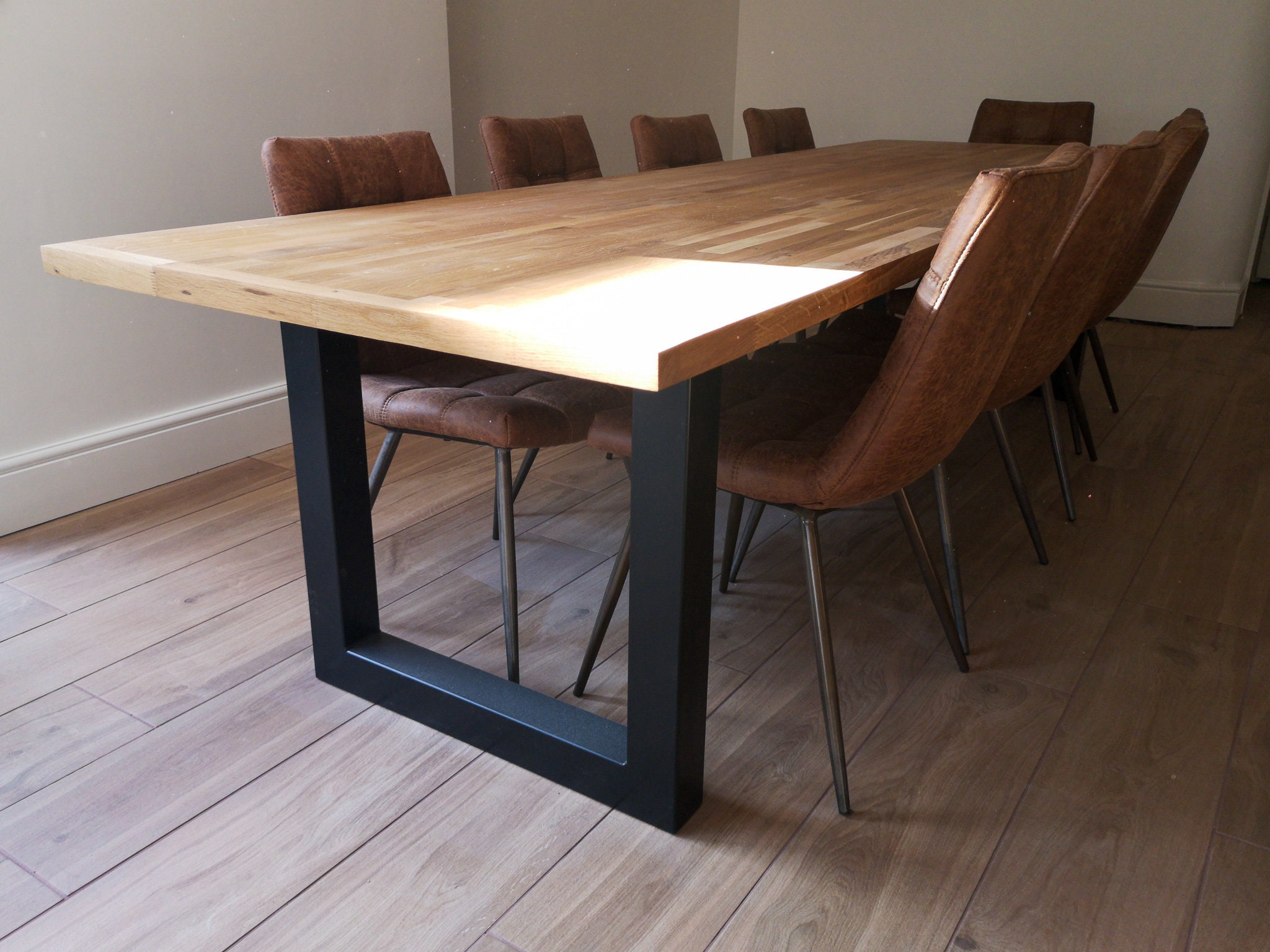Exploring Different Designs for Dining Room Table Legs to Suit Your Visual
Exploring Different Designs for Dining Room Table Legs to Suit Your Visual
Blog Article
A Thorough Take A Look At Table Leg Styles: Finding the Ideal Suit
Choosing the best dining table leg design is important for both aesthetic appeal and sensible capability. Conventional four legs supply ageless beauty and stability, while the stand base offers increased legroom and a modern-day look. For those with bigger tables, trestle legs make sure durable assistance, whereas hairpin legs present a mid-century contemporary ambiance with their minimal style. The x-shaped legs blend modern style with enhanced security. Each of these options brings one-of-a-kind advantages, making the choice extra than just an issue of preference. Check out even more to uncover which style flawlessly matches your eating space and way of living.
Typical 4 Legs
Among the various types of eating table leg styles, the traditional four-leg design remains a classic choice for numerous households. Four legs give well balanced assistance, making sure the table continues to be secure and qualified of bearing substantial weight (dining room table legs).
From a visual viewpoint, the standard four-leg design can be easily adjusted to numerous interior styles. Whether crafted from timber, metal, or a combination of materials, these legs can be delicately sculpted, sleek and minimalistic, or anything in between. Their versatility permits them to match both rustic and modern setups perfectly.
Moreover, the uncomplicated framework of the four-leg design promotes simplicity of movement and placement within a space. Unlike even more facility bases, this style decreases obstructions, providing adequate legroom for diners. In recap, the traditional four-leg eating table leg style weds withstanding style with functional functionality, making it an astute choice for those looking for both form and feature in their dining furnishings.
Pedestal Base
Frequently commemorated for its classy and space-efficient design, the pedestal base is a recognized option to the typical four-leg configuration in dining table leg styles. Without corner legs, diners are paid for better liberty of movement, making it an optimal choice for round and oblong tables that advertise even more intimate and comprehensive celebrations.
Moreover, the pedestal base's central assistance can take care of significant weight, enabling using heavier tabletops, such as marble or thick hardwood. This strength coupled with its aesthetic flexibility makes the pedestal base a popular choice in both conventional and contemporary indoor settings. It can perfectly integrate with various design themes, from classic style to minimal modernity. Moreover, the main column itself provides a canvas for elaborate designs and artistic expressions, including an aspect of aesthetic interest beneath the table. In summary, the stand base incorporates performance with style, making it a refined and functional option for diverse eating atmospheres.
Trestle Legs
Trestle legs offer a durable and ageless foundation for eating tables, characterized by their horizontal cross-bracing and tough support beams. Stemming from middle ages times, this style has actually progressed yet kept its important framework, making it a perennial fave in both traditional and modern setups. The central trestle light beam, frequently sustained by two or more upright articles, provides exceptional stability, enabling larger table lengths without the demand for additional legs.
A considerable advantage of trestle leg tables is the adequate legroom they offer. Unlike tables with four edge legs, the lack of obstructions at the table's edges gives unimpeded area for chairs and restaurants, boosting comfort and availability. This makes trestle tables suitable for accommodating larger events, whether in a dining-room or a banquet hall.
From rustic farmhouse to sleek contemporary styles, trestle legs can be tailored to match specific preferences. Their long-lasting allure and useful benefits make trestle legs a compelling choice for those looking for both design and usefulness in see this their eating table.
Hairpin Legs

The allure of hairpin legs depends on their simpleness and versatility - dining room table legs. Offered in a variety of products, including steel and brass, they can find out be completed in countless shades to complement various indoor designs. Whether combined with a rustic wooden table top or a modern glass surface, hairpin legs effortlessly mix capability with a touch of classic charm
Sturdiness is an additional notable feature of hairpin legs. Regardless of their fragile appearance, these legs are engineered to bear considerable weight, making certain the table remains secure and secure. Additionally, they are fairly simple to set up, making them a preferred selection for DIY lovers and specialist furnishings makers alike.
X-Shaped Legs

Created from products such as steel, wood, or a mix of both, X-shaped legs can be customized to match various design preferences. Steel legs commonly offer a sleek and industrial feeling, ideal for loft-style houses and contemporary eating rooms.
In addition, the engineering behind X-shaped legs additional resources ensures also weight distribution, reducing the danger of wobbling and improving toughness. This makes them specifically fit for bigger eating tables that call for added assistance. Fundamentally, X-shaped legs mix sensible design with modern-day aesthetic appeals, making them a classic selection for varied eating atmospheres.
Final Thought
An extensive understanding of eating table leg designs discloses the distinctive attributes and benefits of each layout. Trestle legs make sure robust assistance for larger tables, and barrette legs present a mid-century modern-day aesthetic.
Report this page